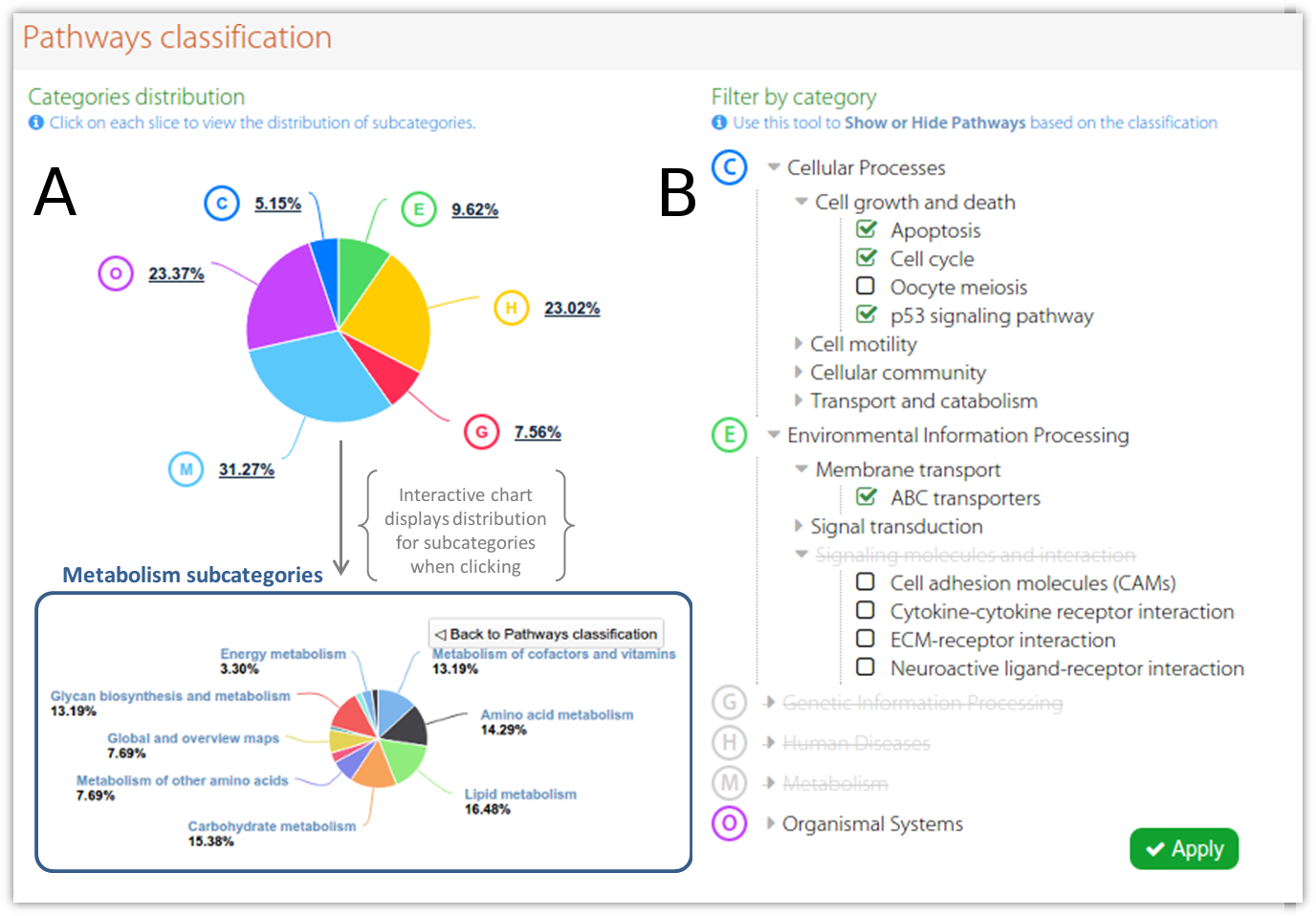
Hierarchical classifications for KEGG pathways
As mentioned in previous sections, KEGG Pathways are organised in a hierarchy around seven main classifications (Cellular Processes, Drug Development, Environmental Information Processing, Genetic Information Processing, Human Diseases, Metabolism, and Organismal Systems) and over 50 secondary classifications. The pathway enrichment analysis (PEA) performed by PaintOmics may return a high number of pathways, however, sometimes not all of these are of interest to the user in functional terms. For example, in the study of certain biological processes in murine cells the PEA may return pathways from the Human Diseases classification. Hence, the presence of these undesired pathways can hamper the interpretation of the results. For this reason, PaintOmics 4 includes a Pathway Classification tool that organizes the reported pathways based on their KEGG classifications and provides some details about their hierarchical distribution (Figure 1-A). This tool allows the user to browse the results and hide any undesired pathways based on their main or secondary classifications (Figure 1-B).

Figure 1. Pathway classification (A) and Classification filters (B) in PaintOmics 3. Both tools allow users to discriminate pathways which are less important for their particular experiment.